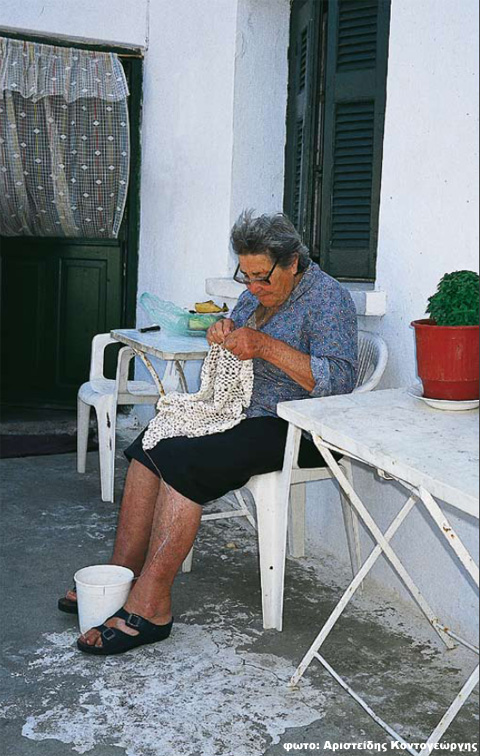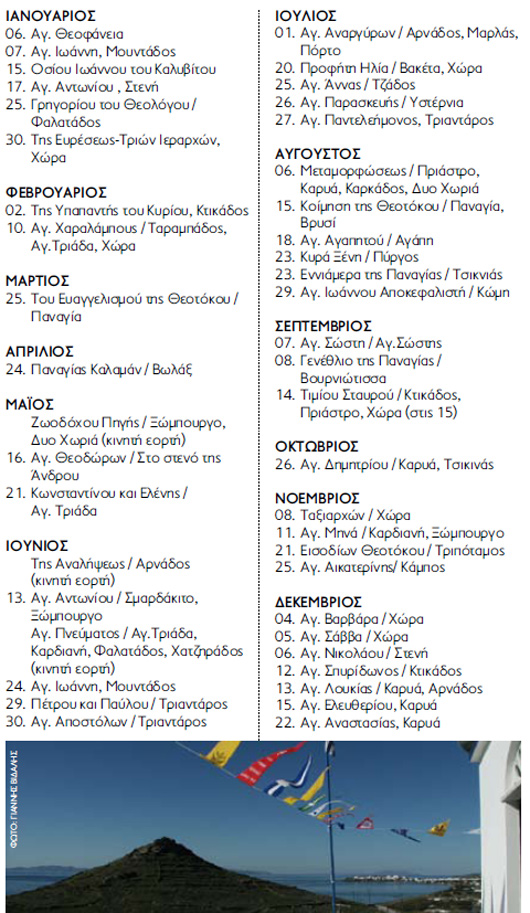
 Like every other island in Greece, Tinos has its own customs as well, which the village associations and the inhabitants try to preserve until today. The visitor of the island will have the chance to get acquainted with them and experience these different traditions. The Carols, the Tinian Wedding, the evening party, the local music are some aspects of the Tinian cultural heritage.
Like every other island in Greece, Tinos has its own customs as well, which the village associations and the inhabitants try to preserve until today. The visitor of the island will have the chance to get acquainted with them and experience these different traditions. The Carols, the Tinian Wedding, the evening party, the local music are some aspects of the Tinian cultural heritage.
TINIAN WEDDING
The wedding is a religious ceremony but also a cultural expression, since, apart from the ritual factor, the wedding keeps local traditions alive. In Tinos, weddings are celebrated following the same procedure in both dogmas, orthodox and catholic. Some days before each wedding, girls and other relatives of the pair about to be married, go around the houses of the village and the neighboring villages to invite people. On the wedding day, the village barber goes to the bridegroom's house to cut his hair and shave him. Young men come to help him dress and, in the mean time, they shoot with a riffle. The young girls go to the bride's house to help her dress. A wedding procession starts then, with the folk instruments (violin, lute) in the front, playing wedding songs, followed by the groom (formerly on a horse or mule) and his family, the relatives and the guests. The same happens with the bride, who enters the church escorted in the same manner by her own relatives and friends. At the church forecourt, she meets the groom and together they go into the church. The religious ceremony follows and afterwards the procession starts again. The musicians go first, playing wedding songs. Right behind them the newlyweds are following, then the parents, the maids of honor and everybody else. At the house, a great reception is waiting, with traditional confectionery (almond cookies, traditional pastry called "fishes", honey-baked sesame sweets, and fried dough honey rolls), as well as food. Formerly, rabbit stew was a necessary dish. The wishes and treats are countless. Everybody sits around the table and the instruments start playing. The first to dance are the newlyweds, while the musicians sing improvised songs for the groom and the bride, complimenting the groom's youthful vigor and the bride's beauty. The merry celebration goes on until dawn but in old times, it used to continue until the afternoon of the next day.
LOCAL MUSIC AND INSTRUMENTS
The “par excellence” necessary instruments in a Tinian “panigyri” (revel) are the violin and the lute. Formerly, the hornpipe was usually played as well, but unfortunately it is extinct nowadays and the hornpipe musicians on the island are few. The guitar, the “outi”, the bouzouki, the accordion and the clarinet are secondary and they follow the main instruments in big orchestrations. The most popular dances in Tinos are "Balos" and "Syrtos".
CAROLS (CHRISTMAS- and EASTER-)
The Christmas Carols are a special category of religious folk songs that are chanted all over Greece on Christmas Eve, New Year's Eve, the Eve of Epiphany, and Palm Sunday to praise the Lord, Jesus Christ, Saint John the Baptist, and Basil the Great.
In Tinos, during the past, these carols expressed mainly the religious feeling. The elderly people of the village chanted at the night of the Eve around the houses, starting from the priest's house. As the years went by and the old carol chanters were passing away, younger people started singing them around the villages, holding drums, which today have been displaced by triangles.
"VEGHERA" (EVENING PARTY)
The "Veghera" is an ancient custom that has been preserved until recently in the villages of Tinos, during the cold winter nights. This custom contributes to the villagers' social life, brings relatives and friends closer together and gives joyful play opportunities to children. The family that organized the "Veghera", used to prepare the oil lamp early in the afternoon making it, at the same time, the necessary guide for the road. During the course of the evening, the younger child held the lamp and walked up front, leading the rest of the family to the house where the “veghera” was taking place. When they arrived at their final destination, the children of the two families enjoyed themselves playing various games in the yard and at the end, when they were tired they sat and listened to the grandmother narrating fairy tales and stories with elves (called Ayeloudes in Tinos). Beside the table filled with all sorts of delicacies, there was the wood basket for the fireplace, where the chestnuts were baking. The adults sat all together, while the housewife knit and plied the distaff. The "Veghera" lasted until ten or eleven o'clock in the evening and when it ended, the guests lighted the lamps again, the families wished each other good night and went home.
 |
Πίνακας εορτών στην Τήνο
